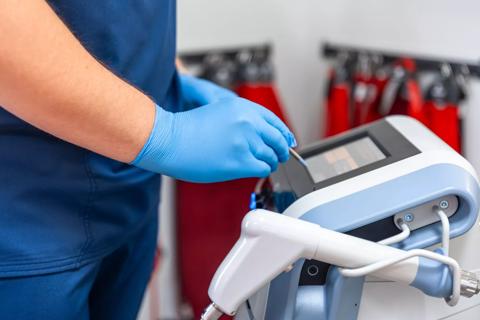Advertisement
Find out about the wide range of “normal penises.”

Think about ice cream: It comes in lots of different varieties — cones, cups, sundaes, milkshakes, on a stick. All different-looking, sure, but all perfectly normal and great types of ice cream.
Advertisement
Cleveland Clinic is a non-profit academic medical center. Advertising on our site helps support our mission. We do not endorse non-Cleveland Clinic products or services. Policy
The same goes for penises. A penis can be small, large, curvy or bumpy. Different-looking, sure, but all perfectly normal and great types of penises.
“As a men’s health provider, I answer a lot of penis-related questions,” says urologist Bradley Gill, MD. “It’s comforting for guys to know that size or appearance rarely changes the function of a penis. But if there ever is a functional concern, there’s often a solution.”
Dr. Gill gives us the hard truth about different penis types:
A: There’s no such thing as normal. Penis size varies from person to person. Some men may have a larger penis when it’s flaccid, but it doesn’t increase much in size with an erection. Others see a significant increase in size going from flaccid to erect.
Penile size very rarely affects a man’s ability to function or conceive. And, despite what you may read online, there are no safe or scientifically proven procedures to increase penis size. Some of the attempts men pursue to increase penis size can lead to permanent deformation, which can even result in an infection or the loss of the penis.
A: A curved or crooked penis, also known as Peyronie’s disease, is quite common. The penis can go in any direction: Up, down, left, right and even S-shaped. If a penis is curved since birth, it’s typically because of the way erectile tissue developed on one side, making that side shorter or longer than the other.
Advertisement
When the condition develops with age, it’s usually because scar tissue formed and tethered one side of the penis, making it shorter than the other side. We don’t completely understand why this scar tissue develops in some men, but not others.
A: Blood vessels are a normal anatomical variation among men and usually nothing to worry about. As with penis size, how noticeable they are will vary from man to man.
The penis has many blood vessels, and during an erection, the penis is full of highly pressurized blood. The blood vessels swell and become more obvious during an erection, though sometimes they are pronounced on a flaccid penis, too.
A: The color of the penis can vary from the skin color elsewhere on the body — it might be paler and sometimes even appear pink, blue or purple. An erection can change the appearance as well. In general, we don’t worry about variation in skin color unless something new and consistent develops, like a red spot, rash, or sore. Some men are concerned because they have a bump on their penis. That is typically normal and possibly caused by scar tissue, though it’s a good idea to have it checked out. If a man develops a sore or swollen red lesion on their penis, he should definitely see a doctor, particularly if it is oozing fluid.
A: Hypospadias is fairly common and just means the hole isn’t at the tip of the penis. Doctors usually identify it in childhood, though sometimes mild cases may go unnoticed. Depending on where it is located, it could change the urinary or ejaculation stream. If you have hypospadias and have trouble conceiving, talk with your urologist. Your semen may not be making its way inside the vagina.
A: Your penis should cause pleasure, not pain. Talk with a urologist if you’re having pain. Sometimes pain with ejaculation is due to a narrowing of the tube or hole at the end of the penis, which increases the pressure associated with ejaculation and causes discomfort. Painful erections may indicate an underlying condition or injury to the penis.
A: As many as 15 to 30 million men have erectile dysfunction (ED). Talk with your doctor if you have any issues obtaining or maintaining an erection. We now know that ED is an indicator of overall health in men, particularly as they age. ED could be a sign of diabetes, heart disease or high blood pressure.
ED in young, healthy men is typically related to stress or anxiety. Regardless of the cause, we have effective ED treatments to get you functioning again.
Advertisement
Another type of ED is priapism, an erection lasting more than four hours. A long-lasting erection is a medical emergency that requires prompt treatment. Priapism can result in tissue damage or deformation of the penis if left unchecked.
Advertisement
Learn more about our editorial process.
Advertisement

Changes in penis performance or appearance may signal heart issues, diabetes and more

See your urologist if pain is persistent or severe

Trouble peeing and leaking urine are common indicators of prostate gland issues

Going seven times a day is average, but more or less can be OK, too, as long as you’re not experiencing drastic changes

Staying hydrated and peeing after sex can help prevent this common post-sex condition

Pee is usually odorless, but if it’s stinky, your diet is the most likely culprit

Forget the myth and answer nature’s call when your bladder feels full

Early results show the procedure may help resolve mild to moderate ED

When you get bogged down with mental tasks, you can experience mood changes, sleeplessness and more

You can alternate these OTCs to help with pain management and fever reduction

Non-exercise activity thermogenesis is all the activity we do that’s not technically exercise but is still important to your health and well-being